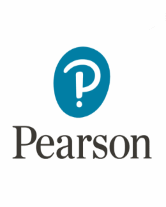Objective
The concept of comparative subtraction (comparing two quantities and determining the difference) is a little more difficult to grasp than take-away subtraction and should be practiced separately. In this lesson students compare one number with another using manipulatives, write number sentences to show the comparisons, and then relate the number sentences to story problems.
Materials
For each pair of students:
two-sided counters or counters of two different colors
1-6 number cube
5-10 number cube
Procedure
Draw two blank ten frames side by side on the chalkboard. Ask, "Which number is greater, 5 or 8?" When 8 is identified as the greater number ask, "How much greater is 8 than 5?" Model how to find the answer using these steps:
Draw 5 circles in the first ten frame.
Draw 5 circles in the second ten frame.
Draw 3 different-color circles (or draw a different shape) in the second frame as you count on from 5 to 8 ("six, seven, eight").
Ask students to compare the frames and find how many more counters are used to show 8 than are used to show 5. When it has been determined that 8 is 3 more than 5, show how to write the number sentence 8 - 5 = 3 to represent it. Compare two or three other pairs of numbers following the same steps.
Next, have students work in pairs. Each student in a pair rolls a number cube. If both students roll the same number, students roll again. From the two numbers rolled, have them determine which is the lesser number and which is the greater number. Have the partner who rolled the lesser number represent it, using same-color counters, on one ten frame. Have the partner who rolled the greater number represent it on the other frame by first representing the lesser number with the same-color counter as on the first frame, then counting on from it to the greater number using the second-color counters. Each student should then record the corresponding number sentence on his or her own paper. Have students repeat the steps until they have recorded ten number sentences.
Invite each student to write one of the number sentences he or she recorded on the chalkboard. Discuss the comparison shown in each number sentence by asking questions such as, "How much greater is..." and "How many more counters do you need to show..."
Make up simple comparative-subtraction word problems for the number sentences shown on the chalkboard, such as, "Dina is 8 years old. Her brother Daniel is 5 years old. How much older is Dina than Daniel?" and "Terrel has 3 stickers. Marta has 6 stickers. How many more stickers does Marta have than Terrel?" Have students identify the number sentence that represents the problem.

In this lesson students compare one number with another using manipulatives, write number sentences to show the comparisons, and then relate the number sentences to story problems.



